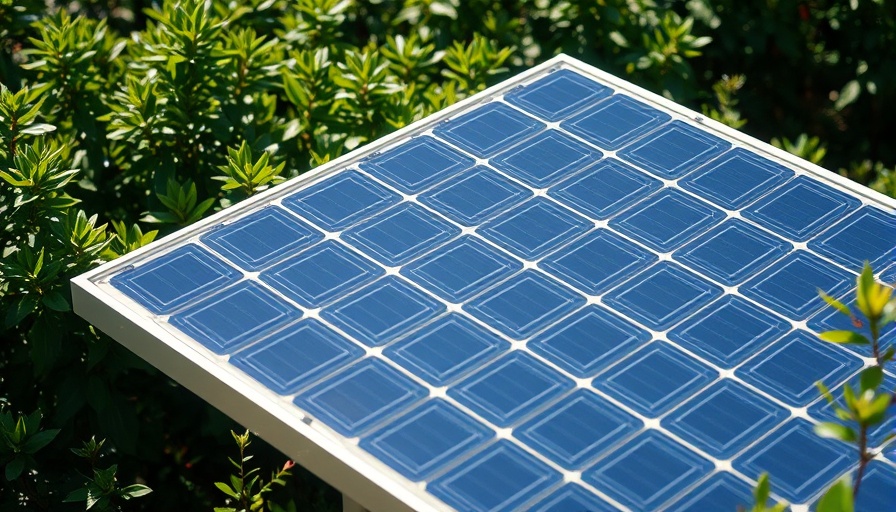
Revolutionizing Energy: The Rise of Ultra-Thin Solar Cells
As our world grapples with the challenges of climate change, the quest for innovative and sustainable energy solutions is more critical than ever. Enter ultra-thin solar cells – a game-changer in the renewable energy landscape that promises to not only enhance our reliance on solar power but also redefine where and how we utilize it. For environmentally conscious homeowners seeking sustainable living solutions, these lightweight and flexible cells may be the key to unlocking a new era of energy generation.
What Sets Ultra-Thin Solar Cells Apart?
Ultra-thin solar cells are remarkable in their construction, boasting a thickness that can be less than a strand of human hair, making them some of the slimmest energy solutions available. This inherent attribute offers several advantages over traditional silicon panels. Not only are these cells lightweight, suitable for various applications (from mobile devices to wearables), but they also provide flexibility that enables them to conform to unique surfaces, which opens up a multitude of possibilities for integration into modern architecture and design.
A Sustainable Future: Materials and Efficiency
One of the standout qualities of ultra-thin solar cells is their potential for high efficiency despite their reduced material usage. Through advanced technologies, including multi-junction layering and nanostructuring, researchers are crafting cells that maximize light capture in compact forms. With new materials like perovskite and organic photovoltaics coming to the forefront, there is growing optimism about the performance capabilities of these innovative solar solutions. Reduced manufacturing costs and lower waste are additional benefits that open doors toward making solar energy accessible to a broader audience.
Challenges Remaining: Durability and Real-World Applications
While the advancements in ultra-thin solar cells show great promise, hurdles remain. Durability is a pressing concern, as these cells must endure real-world conditions while providing consistent energy output. Researchers are actively working on these issues, aiming to improve resilience without sacrificing the inherent benefits of ultra-thin designs.
Practical Applications in Everyday Life
Imagine waking up each day in a home that's partly powered by solar energy woven directly into your clothes or accessories. Ultra-thin solar cells make this scenario plausible. Their lightweight nature means they can be seamlessly integrated into everyday items, from smartphones to the fabric of backpacks, without adding bulk. As a homeowner, reimagining your energy consumption practices can lead you toward a more sustainable lifestyle that embraces both innovative technology and energy efficiency.
Future Trends: What to Watch For
The future of ultra-thin solar cells is ripe with potential. As ongoing research expands the efficiency and durability of these cells, we could see broader adoption in public infrastructure, smart homes, and even transportation. The flexibility of integrating solar technologies in numerous contexts will not only spur innovation but also encourage community acceptance of renewable energy initiatives.
Practical Tips for Eco-Conscious Living with Solar Tech
If you’re fascinated by integrating this eco-friendly technology into your lifestyle, consider these practical tips. Educate yourself on current solar technologies, explore local workshops that cover solar energy systems, and be proactive in your discussions with contractors about incorporating solar into your home renovations. Remember, small steps in embracing sustainable technology can lead to monumental changes in our approach to energy consumption.
As we move towards a greener future, staying informed about innovations such as ultra-thin solar cells not only empowers us as individuals but also paves the way for a collective shift to sustainable living solutions.
Empower your lifestyle by exploring solar technologies that enhance both sustainability and energy efficiency in your home. Embrace the future of energy!
 Add Row
Add Row  Add
Add 



Write A Comment